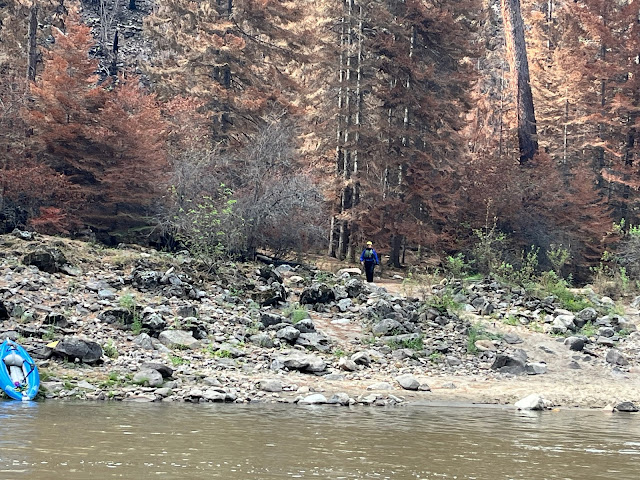
Quagga mussels coat a boat propeller in Utah
Hi all,
The Idaho State Department of Agriculture
(ISDA) has confirmed the presence of quagga mussel larvae in the Middle Snake area between Shoshone Falls and the Centennial Waterfront Park below the Perrine Bridge. These findings mark the first time a rapid response plan has been
put into action to eliminate quagga mussels discovered in Idaho waters.
This is something we all hoped would never happen. Like other Idaho boaters, I've been dutifully purchasing my invasive species stickers each year to support the statewide watercraft inspection program run by the Idaho State Department of Agriculture. Multiple boat-check stations across the state inspect hundreds of watercraft each year. They often intercept fouled boats from Lake Powell, Lake Mead or other places that have been invaded by quagga mussels.

Watercraft inspectors hot wash a boat in Twin Falls.
Somehow, someone launched a watercraft fouled with invasive mussels at some point in the Middle Snake region in recent weeks. They could have started an outbreak that could cost the state and others millions of dollars if the quaggas take root, multiply and destroy the river ecosystem.
The introduction of quagga mussels poses
a major threat to Idaho. All hands are on deck to contain and control the invasive species. Quaggas can quickly spread and clog
pipes that deliver water for drinking, energy, agriculture, recreation, and a
variety of other uses. These mussels also negatively affect fish populations and
wildlife habitat. The mussels are highly competitive, persistent, and can
create monocultures that will eliminate Idaho’s diverse biological landscape.

Even things like duck decoys and fishing waders need to be contaminated.
Gov. Brad Little and the ISDA are
overseeing a swift response to the problem in coordination with the Idaho
Department of Environmental Quality, Twin Falls County Commissioners, the mayor
of Twin Falls and more. In the meantime, the Middle Snake River has been closed
to public use. It’s imperative that the public stay away from the river while
further water testing is done, and treatment plans are developed, officials
said.
What can you do to help?
- CLEAN, DRAIN, DRY ALL WATERCRAFT AND ITEMS
THAT GO IN THE WATER – This situation is reminder to anyone who has watercraft
or items you put in the water to be vigilant in practicing the steps of CLEAN,
DRAIN, DRY before putting your watercraft or item back in the water. This
includes boats, kayaks, paddleboards, canoes, oars, waders, boots, lifejackets,
fishing gear, buckets, nets, and other items. Visit idaho.gov/quagga
for information on CLEAN, DRAIN, DRY.
- If your watercraft (including kayaks, canoes,
paddleboards, boats, and others) has been on the Snake River in the
Centennial Park area of Twin Falls in the past 30 days, please take it to
an ISDA hot wash station in Twin Falls for
proper treatment. Conveyances (items like duck decoys, waders, fishing tackle,
etc.) should also be taken to a hot wash station. DO NOT attempt to decontaminate
watercraft yourself. De-contamination requires a hot wash at 140 degrees F.
- Stay out – Closures are in place in and
along the Snake River until further notice as the investigation in the area
continues. The public’s cooperation in staying out of the impacted area is
crucial to the success of our efforts. For current closure information, visit idaho.gov/quagga.
- Chemical treatment starts next week - Another reason to stay away from the river and let the professionals do their work.
How can you stay updated?
Visit idaho.gov/quagga to sign up to receive updates with the latest information.
For more information about the quagga mussel issue, go here: https://agri.idaho.gov/main/plants/snake-river-quagga-mussel-veligers/











